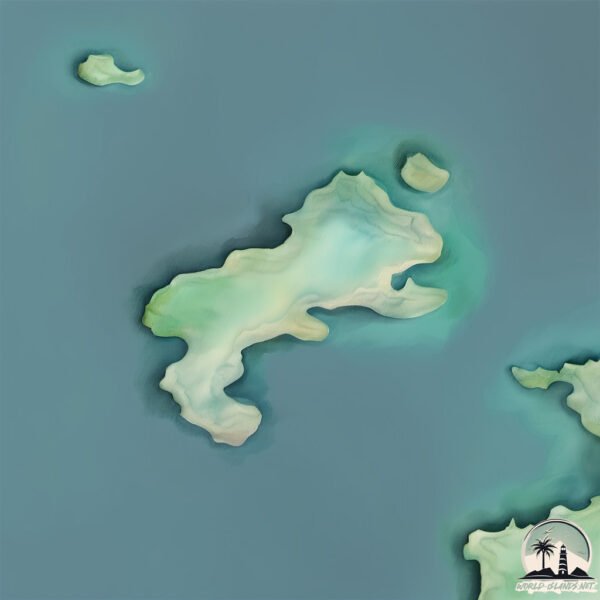Welcome to Inch Kenneth , a Temperate island in the Inner Seas off the West Coast of Scotland, part of the majestic Atlantic Ocean. This guide offers a comprehensive overview of what makes Inch Kenneth unique – from its geography and climate to its population, infrastructure, and beyond. Dive into the details:
Geography and size of Inch Kenneth
Size: 0.976 km²Coastline: 7.3 kmOcean: Atlantic OceanSea: Inner Seas off the West Coast of ScotlandContinent: Europe
Inch Kenneth is a Tiny Island spanning 0.976 km² with a coastline of 7.3 km.
Archipel: British Isles – A group of islands off the northwest coast of mainland Europe, including Great Britain, Ireland, and over 6,000 smaller islands, known for their rich history and cultural diversity.
Tectonic Plate: Eurasia – One of the world’s largest tectonic plates, the Eurasian Plate covers a significant portion of Europe and Asia. It’s characterized by diverse geological features, including the Ural Mountains, the European Plain, and the Himalayas formed from its collision with the Indian Plate.
The geographic heart of the island is pinpointed at these coordinates:
Climate and weather of Inch Kenneth
Climate Zone: TemperateClimate Details: Temperate Oceanic ClimateTemperature: Warm Summer
Climate Characteristics: Known for its moderate year-round temperatures with ample rainfall and no dry season. Warm summers are characteristic.
Topography and nature of Inch Kenneth
Timezone: UTC±00:00Timezone places: Europe/LondonMax. Elevation: 1 m Mean Elevation: -1 mVegetation: Agricultural MosaicTree Coverage: 34%
The mean elevation is -1 m. The highest elevation on the island reaches approximately 1 meters above sea level. The island is characterized by Plains: Flat, low-lying lands characterized by a maximum elevation of up to 200 meters. On islands, plains are typically coastal lowlands or central flat areas.
Dominating Vegetation: Agricultural Mosaic
Vegetation: 2 vegetation zones – Low Diversity Island
Infrastructure and Travelling to Inch Kenneth
Does the island have a public airport? no .
Does the island have a major port? no .
The mean population of Inch Kenneth is 0 per km². Inch Kenneth is Uninhabited. The island belongs to United Kingdom .
Continuing your journey, Mull is the next notable island, situated merely km away.
Inch Kenneth, Isle of Mull, Argyll - Discover Scotland
Part of a series of travel guides produced by Discovery Audio Guides Ltd. Narrated by Alma Cadzow. Also available on the ...
Inch Kenneth, Isle of Mull, Argyll - Discover Scotland
Part of a series of travel guides produced by Discovery Audio Guides ...
Part of a series of travel guides produced by Discovery Audio Guides Ltd. Narrated by Alma Cadzow. Also available on the ...
Isle of Mull | Inch Kenneth Island, Knockvologan Beach, Fidden Farm Campsite
Great camping trip to the Isle of Mull .... such a lovely place.
Great camping trip to the Isle of Mull .... such a lovely place.
Chapel Inch Kenneth Island On History Visit Off The West Coast Of The Isle of Mull Scotland
Tour Scotland short travel clip with Scottish music, of a ruined ...
Tour Scotland short travel clip with Scottish music, of a ruined chapel on Inch Kenneth, Scottish Gaelic: Innis Choinnich, a small ...
United Kingdom is classified as Developed region: G7: Group of Seven – Major advanced economies, including Canada, France, Germany, Italy, Japan, the United Kingdom, and the United States. The level of income is High income: OECD.
News – Latest Updates and Headlines from Inch Kenneth
Stay informed with the most recent news and important headlines from Inch Kenneth. Here’s a roundup of the latest developments.
Loading...
Please note: The data used here has been primarily extracted from satellite readings. Deviations from exact values may occur, particularly regarding the height of elevations and population density. Land area and coastline measurements refer to average values at mean high tide.

